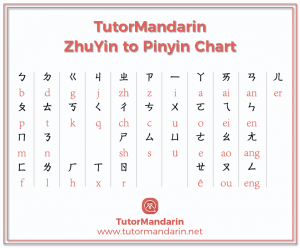To Pinyin or Not To Pinyin, That is the Question
 It seems to be a never-ending battle within the Chinese teaching community, whether we should use pinyin or not when teaching non-native speakers Chinese. I’ve heard teachers who swore by pinyin system, and teachers who believe that pinyin hinders students’ natural acquisition of the language and made them dependent on the system. For this post, I’m going to share both the philosophy of my professor, Dr. Gay Yuen of CSULA, and my own experience in teaching Mandarin.
It seems to be a never-ending battle within the Chinese teaching community, whether we should use pinyin or not when teaching non-native speakers Chinese. I’ve heard teachers who swore by pinyin system, and teachers who believe that pinyin hinders students’ natural acquisition of the language and made them dependent on the system. For this post, I’m going to share both the philosophy of my professor, Dr. Gay Yuen of CSULA, and my own experience in teaching Mandarin.
What is the Pinyin System?
According to the Mandarin Book website, pinyin is
a romanized spelling system of the Chinese language, used to represent Chinese sounds with European letters. Of all the 26 letters of the English alphabet, 25 are used in Pinyin. The sound “V” is not a phoneme used in the Chinese language. Although the letters are the same, the sounds they represent differ in some cases. For this reason, there is really no easy way to tell from pinyin exactly how the Chinese words sound, but it is extremely easy for an English speaker to guess.
The Bopomofo is another standard used to represent Chinese sounds, except instead of English roman letters, it uses Chinese-derived letters for the alphabet. Since the bopomofo has 37 normal characters, it can provide a more complete spelling for Chinese words than the 26 letters of English can.
In short, similar to the romanji system of Japanese, the Pinyin is a way to use English alphabets to create a phonetic system that break the Chinese language down to its phoneme so it’ll be easier for Romance-language speakers to interpret the pronunciation of Mandarin.
Pros and Cons of Pinyin
For many educators that I’ve encountered, the unanimous thought for pinyin is its ease of use and the use of alphabets that serve as a scaffolding tool for non-native speakers. It helps the non-native speakers to have a way in remembering how the characters sound like, and help the students become more fluent in listening and speaking at a faster rate. In addition, it also helps the teachers in teaching the language, since it offered the students a uniform way to study at home as oppose to simply looking at the characters and trying their myriad of methods to spell it.
However, the system is not without its opposition. Many teachers have commented that pinyin system soon became a crutch for students as they rely on the system too much and began to slack off in character recognition. Another complaint was the confusion pinyin provides, with many alphabets representing a completely different pronunciation (such as “q” for ‘chi’, “zh”, to name a few), and that the system cannot accurately represent all phoneme sounds in the Mandarin language as stated above.
Personal Opinion & Observation
I dare not claim to be an expert on the topic, since I did not learn Mandarin as a second language. However, while discussing the topic with Dr. Yuen of CSULA, I received an answer I believe is best (so far) for the topic at hand. According to Dr. Yuen, the use of pinyin system should be selected carefully depend on the age level of the students. The main reason is the phonetic knowledge that target students possess prior to learning Mandarin.
For younger students (grades 3 and below), it is best to teach the students without the pinyin system. Students of this age category are not very well-versed in phonetic system yet, as they are often learning how to spell through listening in English at this age. It is then difficult to impose a brand new system on students and ask them to spell while they are still struggling with their native language. However, younger students can easily associate sounds with objects, so it would be wiser for teachers to use TPR, pictures, authentic objects and repetitions to teach the students and stay off the grammar and the pinyin system for a while.
For older students (grades 5 and up), teachers can start introducing pinyin system to the students to help them with associating characters and sounds. As students gets older, especially in high school, it is imperative that pinyin become one of the very first lessons to teach to the students to help establish a foundation in pronunciation. Pinyin would also serve as a great language introduction, and tackle the common problem of pronunciation and command of tones early on in the curriculum.
When I first started teaching, I was given the wrong information (I was told that you should avoid pinyin at all cost and force students to acquire the language naturally as a baby would), and for weeks I taught without the pinyin system. I then realized the difficulties this pose to my students, and, after the first unit was concluded, I spent a week teaching and honing students’ skills in pinyin, and many of my students (both high and average-performing) exclaimed, “Finally! We should’ve learn this in the beginning!” The improvement I saw after the pinyin instruction, in both character and language acquisition were tremendous.
Of course, I am not one with the mighty authority on Chinese language acquisition, especially since the subject is still under research and debate. But, for someone who has had many discussions with those who have had more experience in the field, and my own observation and experimentation, I feel the abovementioned suggestions are safe to share. Of course, I would also like to openly invite readers to comment and start a discussion on the topic, and share your experience as well. Look forward to hear from you!
—Teresa


When I learned Chinese in college, the first lessons were the sounds using BoPoMoFo. Later I learned the pinyin. I agree basic characters and radicals should be learned first before relying on any pronunciation system